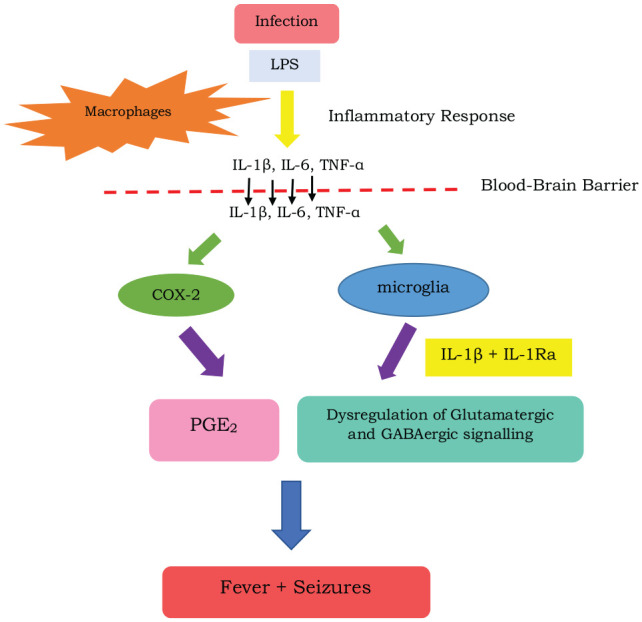Figure 2.

A diagram depicting the pathogenesis of febrile seizures: During an infection, lipopolysaccharide (LPS) is released, resulting in an inflammatory response. This causes macrophages to release cytokines such as interleukin (IL) 1β, IL 6 and tumour necrosis factor (TNF α) which, along with LPS, disrupts the blood-brain-barrier causing it to become leaky. Cytokines then enter through the blood-brain barrier and activate cyclooxygenase-2 (COX-2) and microglia. The COX-2 then catalyses the formation of prostaglandin- E2 (PGE2) which induces fever in the hypothalamus. In addition, activation of the microglia releases proinflammatory and anti-inflammatory cytokines which include Il-1β and interleukin 1 receptor antagonist (IL-1Ra) causing dysregulation of the glutamatergic and GABAergic circuits resulting in seizures. Adapted from Waruiru, et al., 2004.15
